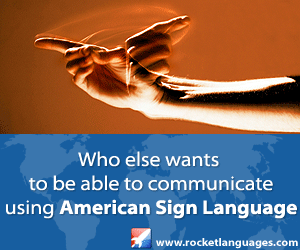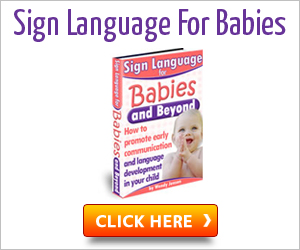Sign Language Signs
People who are deaf and cannot speak have to communicate with each other in their community or with others. As they cannot learn any language or speak any language it is through the sign language that they share their thoughts, feelings and messages with each other.
Sign languages are used by people who are not deaf, in situations where they cannot talk aloud. These include the public libraries, places of religious worship, hospitals, recording studios, etc.
Sign languages are unique to their own country or region. Sign languages develop mainly based on the local language of that particular area. All sign languages though are comprehensive and have sets or rules including grammar.
Sign language involves the use of hand shapes, expressions of the face, mouthing, spelling using fingers, gestures, etc. Though the basic ideas and structure is the same with all sign languages, there are variations where the signs and symbols involve alphabets and phrases from the local language.
Sign language signs are also thus unique to the language spoken in that country or region. To master all these signs involves constant practice and memorizing these signs. Signing exact English or the SEE is a system that came into existence in the year 1972. SEE is nothing but a code which derives most of its signs of vocabulary from the American Sign Language.
This code was developed to visually represent the English language mainly for use in education of the deaf. This code put forth new signs for various concepts of grammar in a bid to standardize the sign language to a certain extent. Sign language signs are very important for imparting education to deaf children.
It is easier for people who have internalized the English language to learn these sign language signs. Sign language signs vary with people of various languages and regions. If you want to learn the sign language either for knowledge sake or for teaching deaf students, you must memorize these signs. This will enable fluency of thought and actions.
Except for the alphabets pertaining to the various languages, the sign language signs are quite similar for popular objects or phrases. Efforts are being made to universalise the sign languages so that the deaf communities from all over the world can communicate with each other effectively and fluently. If this standardisation is established it will be easier for teachers as well as students of the sign languages.
Sign language signs are put up in charts in the classrooms of the deaf schools. Doing this makes it easier for the students to memorize these signs. There are various internet sites which also provide information on these signs pertaining to various languages. One can learn quite a lot from these sites. You also have information on where and when these language classes are held and you can approach them if you wish to learn sign languages.
Teaching sign language to deaf children is a very noble profession. You can do this part time as well as full time after you are fluent with the various sign language signs, expressions, phrases and the language as such.



